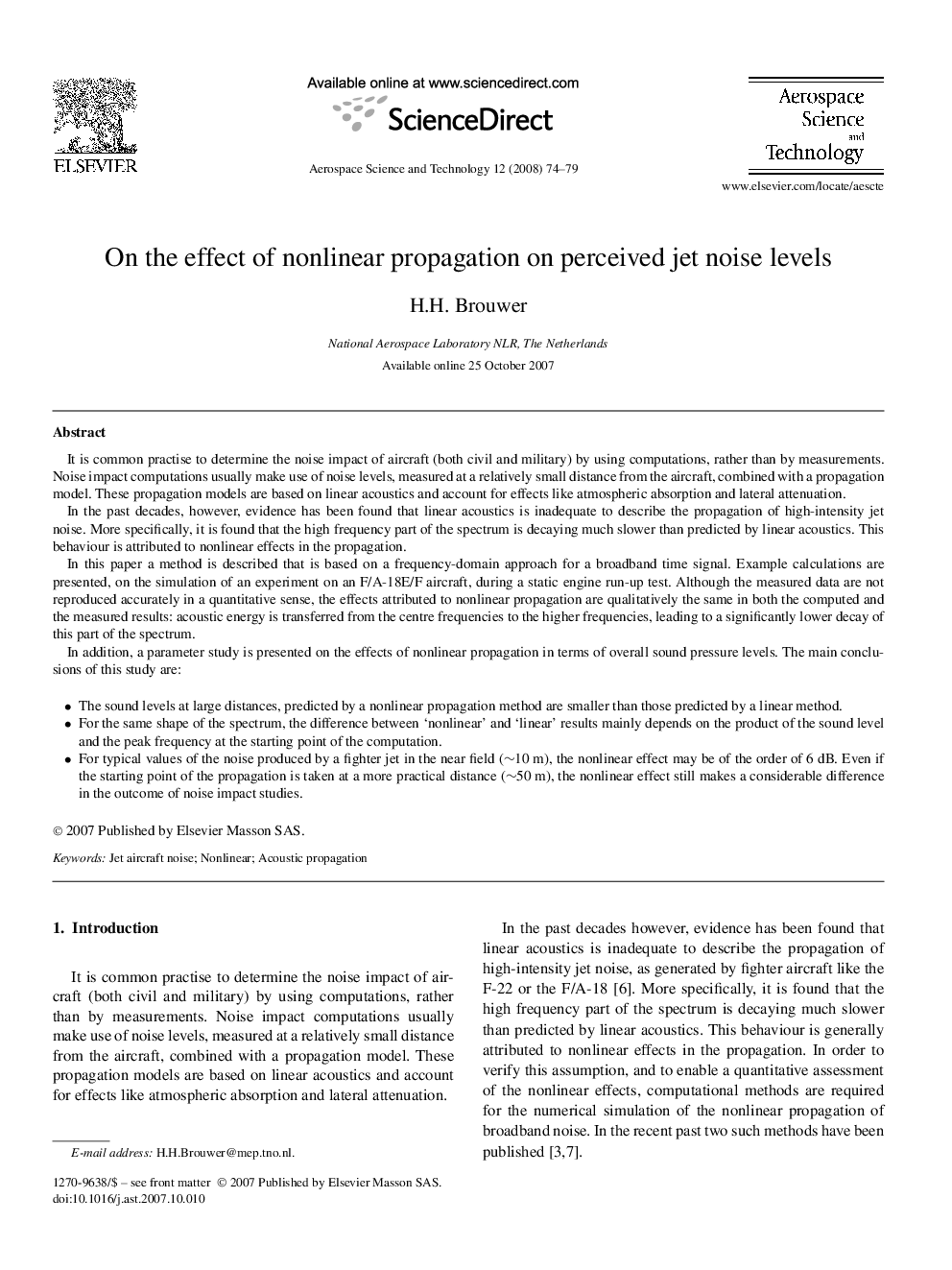| Article ID | Journal | Published Year | Pages | File Type |
|---|---|---|---|---|
| 1718910 | Aerospace Science and Technology | 2008 | 6 Pages |
It is common practise to determine the noise impact of aircraft (both civil and military) by using computations, rather than by measurements. Noise impact computations usually make use of noise levels, measured at a relatively small distance from the aircraft, combined with a propagation model. These propagation models are based on linear acoustics and account for effects like atmospheric absorption and lateral attenuation.In the past decades, however, evidence has been found that linear acoustics is inadequate to describe the propagation of high-intensity jet noise. More specifically, it is found that the high frequency part of the spectrum is decaying much slower than predicted by linear acoustics. This behaviour is attributed to nonlinear effects in the propagation.In this paper a method is described that is based on a frequency-domain approach for a broadband time signal. Example calculations are presented, on the simulation of an experiment on an F/A-18E/F aircraft, during a static engine run-up test. Although the measured data are not reproduced accurately in a quantitative sense, the effects attributed to nonlinear propagation are qualitatively the same in both the computed and the measured results: acoustic energy is transferred from the centre frequencies to the higher frequencies, leading to a significantly lower decay of this part of the spectrum.In addition, a parameter study is presented on the effects of nonlinear propagation in terms of overall sound pressure levels. The main conclusions of this study are:•The sound levels at large distances, predicted by a nonlinear propagation method are smaller than those predicted by a linear method.•For the same shape of the spectrum, the difference between ‘nonlinear’ and ‘linear’ results mainly depends on the product of the sound level and the peak frequency at the starting point of the computation.•For typical values of the noise produced by a fighter jet in the near field (∼10m), the nonlinear effect may be of the order of 6 dB. Even if the starting point of the propagation is taken at a more practical distance (∼50m), the nonlinear effect still makes a considerable difference in the outcome of noise impact studies.
